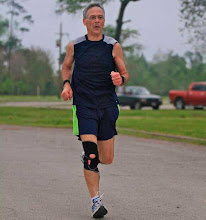After starting the longer commute, I heard a news item on the subject of "hypermilling." There is a website that is devoted to it: http://www.cleanmpg.com/. I found that drivers were practicing a set of techniques that yielded incredible fuel mileage. The drivers were mostly using these techniques with hybrids, but many could be used in any vehicle. Some of the ideas sounded a little extreme to me, like coasting down long downhill sections with the car turned OFF. However, most of the techniques seemed reasonable and safe, and I experimented with and adopted many of them. I began charting my mileage in March, 2008, and continued charting through October, 2009. During these 19 months, I had a series of increasing mpg records in this car. In 2009, I was able to average 36.3 mpg, and the highest I ever achieved was on a single tankful of fuel was 38.6 mpg.
Some of the techniques I applied:
- Keeping tires inflated to the sidewall rating (44 psi cold) instead of the 30 psi on the sticker inside the door. This isn't over-inflation, just maximum safe inflation. Higher pressure yields lower rolling resistance.
- SLOW acceleration-- I watched my tach more than my speedometer when I accelerated. I keep my foot light enough that the tach doesn't wind up in each gear; keeping my tach low and steady got me through the gears and up to speed, but took maybe an extra 30 seconds.
- My driving was mostly on the highway. I used the cruise control and rarely drove over 60 mph.
- Watching farther ahead-- if traffic seems to be slowing, I back off, allow a greater distance to open up between myself and the vehicle ahead of me. Then, when cars ahead are braking, I can usually let off the accelerator and coast, slowing down without braking. If I allow enough space, the vehicles ahead are starting to speed back up before I get close enough to brake. (Coasting is like free mpg; braking converts energy generated with fuel to heat on your brake pads!)
- The same technique in 4 above can be used in the city. Looking ahead as far as possible at the next traffic light(s), when seeing a light changing, by letting off the accelerator and coasting, the light may be green in the time it takes to coast to it, allowing resumed acceleration without braking.
- Any other opportunity to coast-- for example, approaching a stop sign, instead of accelerating until the point of braking, decelerate sooner and coast toward the stop. How soon I decelerate depends on whether it is clear behind me or there is traffic behind me.
- Driving behind trucks on the highway cuts wind resistance, but it is not safe to follow too close.
This is proof that little things can add up to make a big difference!














3 comments:
turn off the car and coast??? I dont think I will be practicing that one.
I also switched from my 2009 to an older small model for my 55 mile commute.
Now, I want to know how you did today
good ideas Vern! I've already picked up one thing I didn't do before - the max inflation on tires. I'll reread this as a good reminder before my big road trip this summer.
Myriam, I agree on the coasting with the car turned off! Too dangerous!
Anna, the pressure rating on the car sidewall says "maximum cold inflation pressure" and is determined by the tire manufacturer to be safe. Just be aware that higher pressure will give a little harder ride. The pressure on the tag inside your door is determined by the vehicle manufacturer for optimal ride and handling. They would rather you use a little more fuel than to think their cars ride rough!
All of the techniques in combination have an impressive cumulative effect. On the highway, I think the single technique that may have the greatest effect is drafting in behind a truck (just not too close)!
Post a Comment